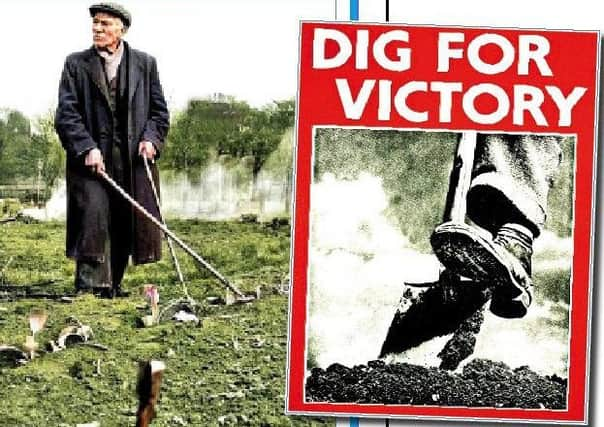Nostalgia - Rush for allotments as Stornoway responds to WWII call-up


Stornoway rose to the occasion with the demand for allotments straining the supply available – a response that won national praise.
Keeping the sheep at bay from the growth in greens was still an issue though...
Advertisement
Hide AdAdvertisement
Hide AdThe Second World War produced many campaigns on the home front.
There were drives to collect wastepaper and scrap metal, advice on keeping ‘mum’ as “Loose lips sink ships” and, with severe rationing in place, the nation was urged to put spades, hoes and rakes to use and turn the smallest bit of ground into a vegetable plot.
This ‘Dig for Victory’ effort was promoted by the British Ministry of Agriculture and it wasn’t just domestic gardens that were targeted for culinary cultivation but public parks; even the lawns outside the Tower of London were turned into vegetable plots.
In Lewis, and Stornoway in particular, suitable gardens weren’t in abundance to meet the national need and, as in the rest of the country, allotments became a priority.
Advertisement
Hide AdAdvertisement
Hide AdBy March 1942, when the war was at its height, Stornoway found itself receiving national praise from the Scottish Gardens and Allotments Committee which praised the town for rivalling the excellent record set by Ayr.
Allotments under cultivation had risen from 16, when war broke out in 1939 to 254 – equivalent to one plot per 16.8 of population, or one per 4.5 households.
The surge in gardeners was attributed to the efforts made bythe Town Council, the North of Scotland College of Agriculture, and the local Allotments Association.
“Stornoway is once again in the news. It is always in the lead in progressive schemes,” commented Provost Mackenzie, on reading out the Scottish update to the council at a meeting in March ’42.
Advertisement
Hide AdAdvertisement
Hide AdAccording to a report in the Stornoway Gazette, with the new land the council was bringing in, the number of allotments would be 265, which, the provots added, was “very gratifying”.
“It’s a pleasant change to get a pat on the back instead of a kick in the pants,” agreed Councillor Lees.
But, excellent though Stornoway’s allotment record was, the council was keen to see it improved.
“Is there any more land available?” asked Councillor Gunn.
The town clerk replied that there was just about enough land to give each applicant an allotment, but some wanted an extra piece.
Advertisement
Hide AdAdvertisement
Hide Ad“Have many councillors have got plots?” asked Councillor Gunn.
“I have one, and Bailie Maclean has one,and ex-Bailie Kennedy has one,’’ replied the Provost.
“I was hoping you would say you were giving yours up and I could step in,” said Councillor Gunn.
“Thank you for nothing,” responded the Provost. “It’s too good an investment.”
Advertisement
Hide AdAdvertisement
Hide AdWith a high demand for land for allotments, grazing land for cattle and sheep en route to the stewpot was also becoming scarce. The town clerk suggested the council should ask the Trust, as proprietors, to put a proper fence on the park below the Nicolson Road houses.
“We put some bullocks in there one day and we found them down at Point.” he said.
He also suggested that they should take over the park on Sandwick Road next the school.
“Do you mean the park that’s full of leeks?’’ asked ex-Bailie Tolmie.
Advertisement
Hide AdAdvertisement
Hide Ad“Do you mean the park that’s full of bull rushes?” asked Councillor Gunn.
“I say the park that’s full of irises,” said Bailie Maclean.
“You’re right.” agreed Councillor Gunn, “they are irises.”
“Yes,” said ex-Bailie Tolmie. “I just called them leeks because, with the food scarcity, people might eat them, and they would do them just as much good.”
Both the clerk’s suggestions were agreed to, reported the Gazette, with the provost commenting: “It is in the national interest. It is in the national interest, too, to deal with the sheep problem before the allotment holders put their vegetables down” added Councillor Lees.
Advertisement
Hide AdAdvertisement
Hide AdIt was agreed to chivvy up the county council on the point.
But while the town fathers’ chests were puffed with pride after Stornoway being hailed for its hortricultural habits, there were other statistics revealed that were less satisfying.
When the chief constable’s report was read later, ex-Bailie Tolmie commented: “I see Stornoway leads even in the number of crimes we have. There are still not as many policemen in Stornoway as there ought to be.”
“Stornoway always in the van, as it were, even when the van is a black maria,” noted the Gazette.